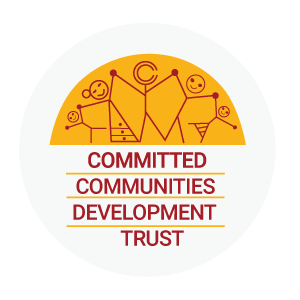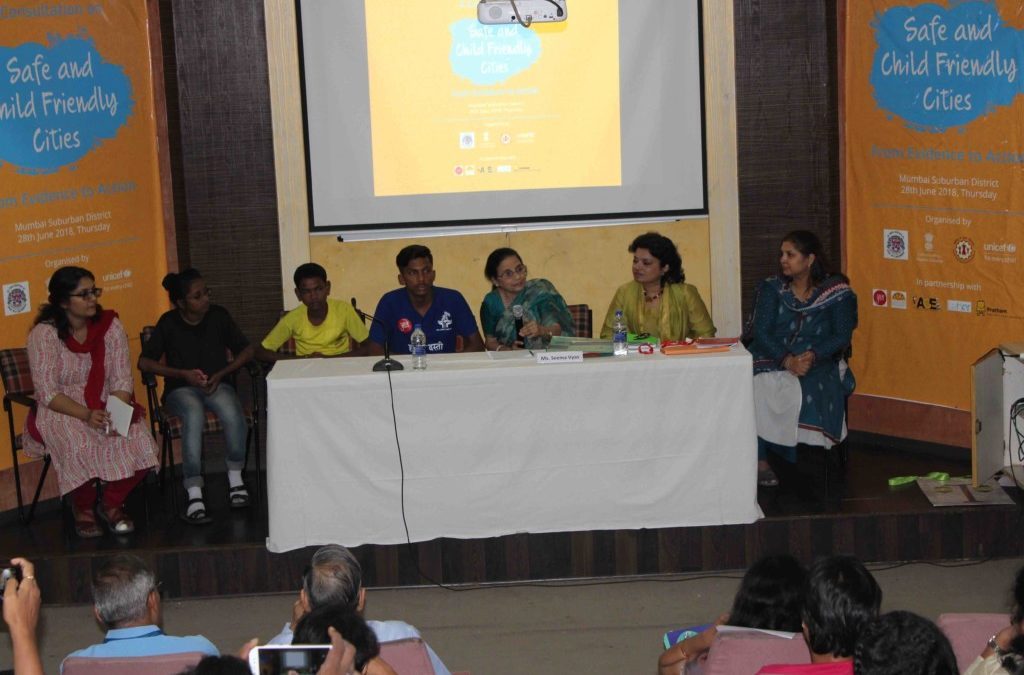‘Making Cities Safe and Friendly for Children and Adolescents is a Must’
All India Institute of Local Self Government (AIILSG), Collector’s Office- Mumbai Suburban, Department of Women and Child Development, UNICEF and Child Rights Organisation’s held a consultation for making Mumbai Safe and Child-Friendly.
Around 120 million Indian children (below the age of 18) living in urban areas lack adequate housing and safe settlement, are exposed to crime, disaster risks, garbage and aspects of environmental sanitation that affect their growth, development and safety. SDG Goal 11 is directed at urban equity and eradicating poverty by providing equitable access to physical and social infrastructure and enhancing the quality of life. Ensuring that cities are safe and child-friendly is central to the achievement of this goal.
Two important studies were released on June 28th 2018 by Ms. Seema Vyas, Member Secretary, Maharashtra State Commission for the Protection of Child Rights at the Consultation on ‘Promoting Safe and Child Friendly Cities from Evidence to Action: Mumbai Suburban’. In her inaugural address, Ms. Seema Vyas welcomed partnerships particularly, with scholars, knowledge partners as well as organisations working to promote the rights of children. Ms. Rajeshwari Chandrasekar, Chief, UNICEF Mumbai Field Office said that UNICEF’s role in the urban is to reduce equity gaps in cities, adapt urban planning and budgeting for children, promote a safe, clean and resilient urban environment for children and strengthen evidence, advocacy, partnerships and participation of children and youth to promote action in support of child-friendly, safe and child-inclusive cities. Building evidence and knowledge are critical for informing policies and this consultation was a step in that direction.
The Child Protection District Need Assessment Study (DNA) by Leher, AIILSG and UNICEF across 30 habitations in Mumbai Suburban District highlight the daily struggles faced by children. The findings of the study will feed into a District Child Protection Plan (DCPP) for the district of Suburban Mumbai. The study recommends the creation of cross-sectoral partnerships to address infrastructural and service deficits at the community level, ramping up the reach of the child protection system and articulating strategies both long and short-term measures for children protection and safety.
Ms. Nicole Menezes felt that age-specific and age-appropriate urban planning was desirable. Spaces for play and recreation are significant gaps but hold the potential for confidence building and leadership in children while also addressing pervasive stress, anxiety, depression as well as high-risk behaviour. The ‘Promoting Safe Communities: Mapping with Children in Mumbai’ study conducted by Action for Children’s Environments (ACE), Committed Communities Development Trust (CCDT), Pratham Mumbai Education Initiative (PMEI), Youth for Unity and Voluntary Action (YUVA) and UNICEF was a collaborative and community based participatory mapping involving children in three urban poor habitats across Mumbai. The mapping used mixed methods and participatory tools.
The presentations were followed by a performance by children who were involved in the mapping research. It showcased the actions taken by children and adolescent groups to make their communities safer including improving lighting in dark bye lanes, transforming garbage filled grounds into play spaces, building relationships with police for greater surveillance in unsafe areas and advocating with MLAs for a foot over bridge over a railway track for safe passage to schools. Puja Pasi, a child researcher from CCDT trained for mapping, who was also involved in transformation of spaces post the mapping explained; “My parents were hesitant to let me be part of the mapping as they felt I was visiting unsafe spaces. However, my confidence and enthusiasm led them to change their mind”. Puja also added that determination and dogged follow up with systems was essential to bring about the change that they wanted in their community.
Mr. Rahul More, Deputy Divisional Commissioner, Department of Women and Child Development, Konkan Division suggested that Anganwadi centres could double up as spaces for learning and life skills education for adolescents, after completion of the Anganwadi activities.
The highlights from the study:
- Habitability: A family of average 5 members lives in less than 250 sq.ft. leading to lack of privacy, increased stress and protection risks for children.
- Only 67% children have birth certificates.
- Children drop out of formal education around age 14/standard VIII, which also marks the end of free, and compulsory education under the RTE, 2009.
- Children feel unsafe at home, at school, and in the neighbourhood due to exposure to violence, abuse, physical hazards, inadequate infrastructure and services, and prevalence of substance abuse.
- Lack of formal play spaces causing children to play in unsafe environments.

